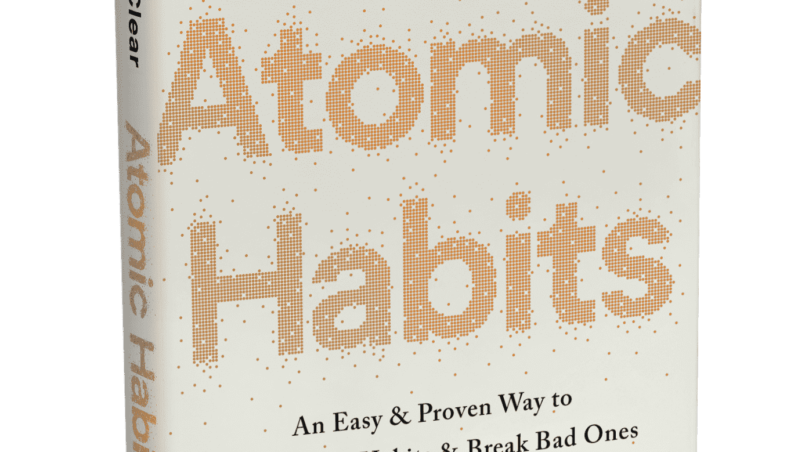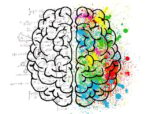We are predictably the prisoners of our own habits. It is said that our habits define our identity and eventually decide our future. What seems difficult, is to break the chains of the habits that we are surrounded with. It is difficult to understand the phenomenon of “habits” and even further marred with hassles to either shed the “bad” ones and to embrace the “good” ones. Every little motivation that we come across to begin a “good” habit, mostly is short lived. The reasons are elusive and therefore our acts conclude in disappointments. The book “Atomic Habits” lays down a clear path which reveals structured pointers to make good habits a consistent affair. The author, James Clear begins with his own story marked with physical ailments and his constant struggles to better his own self by means of nurturing healthy habits. The experiences of James Clear are laid down in this book, which can become a manual for most of us, who are in search of one. My takeaway 4 learnings from the book “Atomic Habits” are elaborated in this post.
Tiny changes Remarkable Results
The professional cyclists in Great Britain had endured nearly one hundred years of mediocrity. Since 1908, British riders had own just single gold medal at the Olympic Games, and they had fared even worse in the cycling’s biggest race, the Tour de France. In 110 years, no British cyclist had ever won the event. The performance of the British cyclists was so dismal that the top bike manufacturers in Europe refused to sell bikes to the team citing decline in sales if their prospective customers saw the Brits using their gear.
Brailsford was hired as the coach for Great Britain and he put the team on a different trajectory. His strategy was relentless commitment to what he referred as “the aggregation of marginal gains”. The whole principle came from the idea that if you broke down everything you could think of, that goes into riding a bike, and then improve it by 1 percent, you will have a significant increase, when you put them all together.

Brailsford and his support staff began making small adjustments to the riding pattern from gear to bikers. They redesigned the bike seats to make them more comfortable and rubbed alcohol on the tires for providing better grip. The team tested different fabrics in a wind tunnel. They tried different massage gels that led to faster muscle recovery. They even hired a surgeon who taught the bikers how efficiently they could wash their hands without the chances of catching cold. They even determined the pillow and mattresses that offered good sleep for the bikers. They painted the inside of the truck with white colour so that the dust could be easily spotted that may have led to performance degradation of the finely tuned bikes. In short, they bought about 1% change in everything that could affect the performance of the British bikers in an international circuit.
After five years of Brailsford coaching, the British Cycling team dominated the road and track cycling events at the 2008 Olympic Games in Beijing, where they won an astounding 60% of the gold medals available. Four years later, at London Olympics, the Brits raised the bar as they set nine Olympic records and seven world records. That, same year, Bradley Wiggins became the first British Cyclist to win the Tour de France. During the ten year span from 2007 – 2017, the British cycling team won 178 world championships and sixty six Olympic or Paralympic gold medals and captured five Tour de France victories in what is widely regarded as the most successful run in cycling history. It all began with tiny changes leading to remarkable results.
Aim for 1% Better Every Day
The Plateau of Latent Potential
One of the core reason why it is so hard to build habits that last, is because people make small changes and fail to see tangible results and decide to stop. But in order to make a meaningful difference, habits need to persist long enough to break through this phase. This phase is the “Plateau of Latent Potential”. If you find yourself struggling to build a good habit or break down a bad one, it is not because you have lost your ability to improve. It is often because you have not crossed the Plateau of Latent Potential.

Imagine, two tectonic plates rubbing against each other for millions of years, the tension slowly building all the while. Then, one day, they grind a bit more in the same fashion as were rubbing since ages but this time the tension is too great and an earthquake erupts. Change can take years – before it happens all at once. When you finally break through the Plateau of Latent Potential, people will call it an overnight success. The outside world only sees the most dramatic event rather than all that preceded it. But you know that it’s the work you did long ago – when it seemed that you weren’t making progress – that made the jump today possible. This being the human equivalent of geological pressure of the earthquakes.
Forget about Goals, Focus on the System
Goals are about the results that you want to achieve. Systems are about the processes that lead to those results. If you are an entrepreneur, your goal might be to build a million-dollar business. Your system is how to test product ideas, hire employees and run marketing campaigns. Goals are basically good for setting a direction, but systems are best for making progress.

Winners and Losers have the same goals. Every competitor wants to win. That’s the goal. Every candidate wants to get the job. And if successful and unsuccessful people share the same goals then what factors differentiates the winners from losers. It wasn’t the goal of winning the Tour de France that propelled the British cyclists to the top of the sport. It was only when they implemented a system of continuous small improvements that they achieved a different outcome.
Set goals but follow process diligently.
Outcome Based Habits Vs Identity Based Habits
Outcomes are about what you get. Processes are about what you do, Identity is about what you believe. Imagine two people resisting cigarette. When offered a smoke, the first person says, “No Thanks. I’m trying to quit”. It sound like a reasonable response, but this person still believes he is a smoker who is trying to be somebody else that is a non-smoker. He is hoping that his behaviour will change while carrying around the same beliefs. The second person declines by saying, “No Thanks. I’m not a smoker”. It’s a small difference, but this statement signals a shift in identity. Smoking was part of his former life, not his current one. He no longer identifies as someone who smokes.

The ultimate form of intrinsic motivation is when a habit becomes part of your identity. If you’re proud of how your hair looks, you will develop the sort of habits to care for and maintain it. Once your pride gets involved, you’ll fight tooth and nail to maintain your habits. True behaviour change is identity change.
The goal thus is not to read a book, the goal is to become a reader. The goal is not to run a marathon, the goal is to become a runner. The goal is not to learn an instrument, the goal is to become a musician.
Your behaviours are usually a reflection of your identity. What you do is an indication of the type of person you believe you are!
This is the core message that I received from the book Atomic Habits. It is an insightful work of research and I strongly recommend you to read it.
Thanks for reading.











Analysis worth a read
Many Thanks for your comment!
Really inspiring and eye opener.
Appreciate your comments. Thanks.